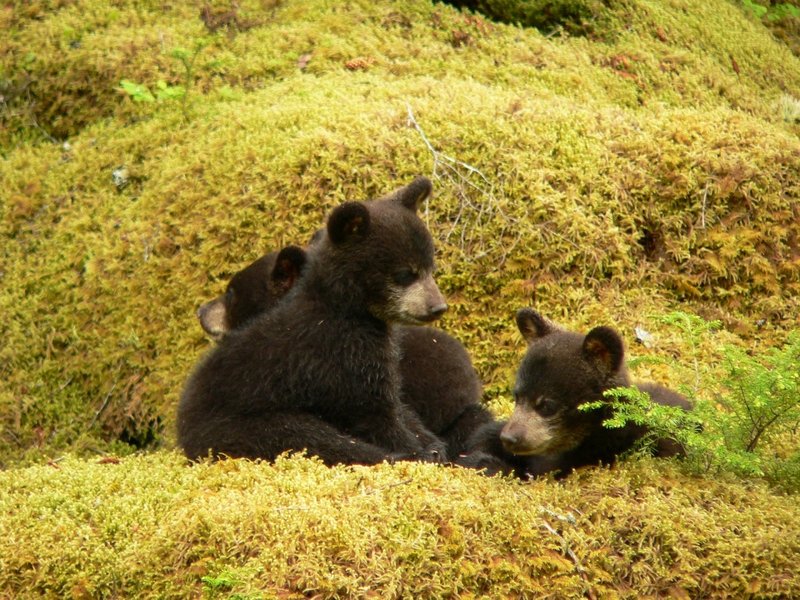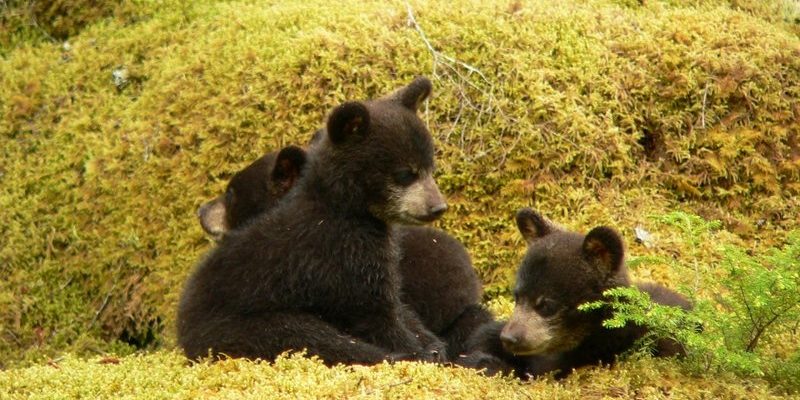
Imagine being a black bear mother, called a sow, who’s just given birth. You’ve spent several months preparing for this—and now, the time has come to raise your tiny cubs. It’s a journey filled with challenges, but also immense joy. Here’s the thing: black bear parenting is all about survival, instinct, and a bit of tenderness. So, let’s dive deeper into how these bears navigate the tough but rewarding world of raising their young.
Black Bear Maternity: The Early Stages
In the wild, black bears usually give birth in January or February while they are in a deep state of hibernation. This might sound unusual, but it helps protect the cubs from harsh winter conditions. The cubs are born blind and hairless, weighing less than a pound each—tiny bundles of potential. They rely entirely on their mother for warmth and nutrition during these vulnerable early weeks.
After a couple of months, when spring finally rolls around, the sow emerges from her den with her precious cubs. It’s an amazing sight as she leads them into the world. You might be wondering, what does she teach them first? Well, it’s all about foraging for food. The sow shows her cubs how to sniff out berries, roots, and insects, instilling the importance of a varied diet right from the start.
The Importance of Bonding
Bonding is crucial for black bear cubs. For the first year, cubs usually stay with their mother, forming a close-knit family unit. This is like a safety net: they learn how to climb trees, find food, and avoid predators—all key survival skills. The mother plays a vital role here, often emulating behaviors that the cubs quickly pick up.
Interestingly, the bond lasts longer than many might think. It’s not just a few months of cuddles and fun. Cubs can stay with their mother for up to 2 years! This extended period gives them a solid foundation, ensuring they’re equipped to face the wild alone when they eventually leave.
Teaching Survival Skills
As the cubs grow, they begin to explore their surroundings. The mother bear is ever-watchful, guiding them as they venture further. Here’s the thing: while cubs are playful and curious, they also learn some serious skills during this time. The sow teaches them which foods are safe to eat and how to catch fish in rivers—yes, black bears can be quite the fishermen!
You might imagine this education as a series of mini-lessons. The mother might demonstrate how to dig for roots, then let the cubs try. If they struggle, she patiently helps them out, showcasing what works best. This kind of guidance is not only about survival; it’s also about creating confidence in the young bears. Over time, they develop their unique personalities and skills.
Social Dynamics and Sibling Rivalry
Life isn’t always easy for black bear cubs. As they grow, competition can arise, especially when it comes to food. Sibling rivalry often kicks in, and the mother bear must balance her nurturing instincts with the need to maintain order. This might seem harsh, but it’s part of the learning process. The cubs must figure out how to share resources and navigate their social dynamics.
Interestingly, the mother bear doesn’t intervene in every squabble. Instead, she watches how they interact, stepping in only when necessary. This hands-off approach teaches the cubs valuable lessons about negotiation and conflict resolution. You could think of it as a bear version of letting your kids work things out.
Preparing for Independence
As the cubs reach that magical age of about 18 months, it’s time for them to start thinking about independence. The mother bear begins to encourage this transition by letting them explore away from her side for short periods. She knows that staying with her forever isn’t an option; they need to be prepared for life on their own.
During this phase, the sow continues to teach them about territory and finding safe places to live. She might show them the best spots to find food and where to build a den on their own. You see, leaving home isn’t just about wandering off; it’s about setting up a future. The lessons learned during this stage will influence their survival skills for the rest of their lives.
The Risks and Challenges of Raising Cubs
Raising young bears in the wild comes with its fair share of risks. From predators like wolves or mountain lions to harsh environmental conditions, the survival of the cubs isn’t guaranteed. This is something every black bear mother knows well. Unfortunately, not all cubs make it to adulthood. It’s a tough lesson, but it’s part of life in the wild.
Sows have to be incredibly vigilant, constantly on the lookout for danger. They often choose secluded den sites to keep their cubs safe. Even after they leave the den, the mother continues to watch them closely for any signs of trouble. Honestly, this vigilant parenting style mirrors how many species work to protect their young, showcasing the universal drive to nurture and survive.
In the world of black bears, raising young is an intricate dance of nurturing, teaching, and preparing for independence. From the moment they’re born in the warmth of winter dens to the bittersweet moment when they venture off on their own, black bear mothers exhibit unwavering devotion.
As you can see, it’s not just about survival but nurturing a future generation that’s essential to the ecosystem. So next time you spot a black bear, think about what it takes to raise those adorable cubs. Each tiny bear has a story filled with challenges, growth, and the promise of a wild life ahead. As their journey begins anew, the cycle of life continues in the beautiful dance of nature.

